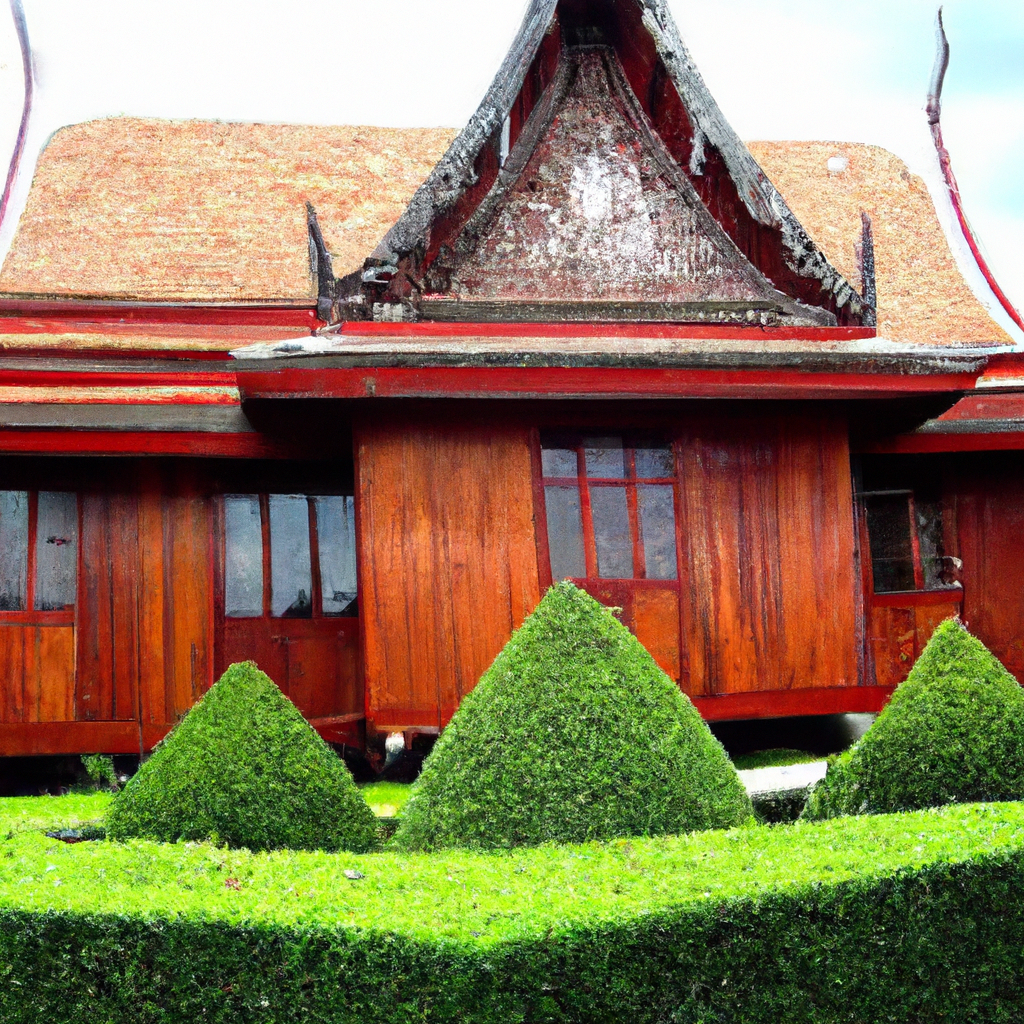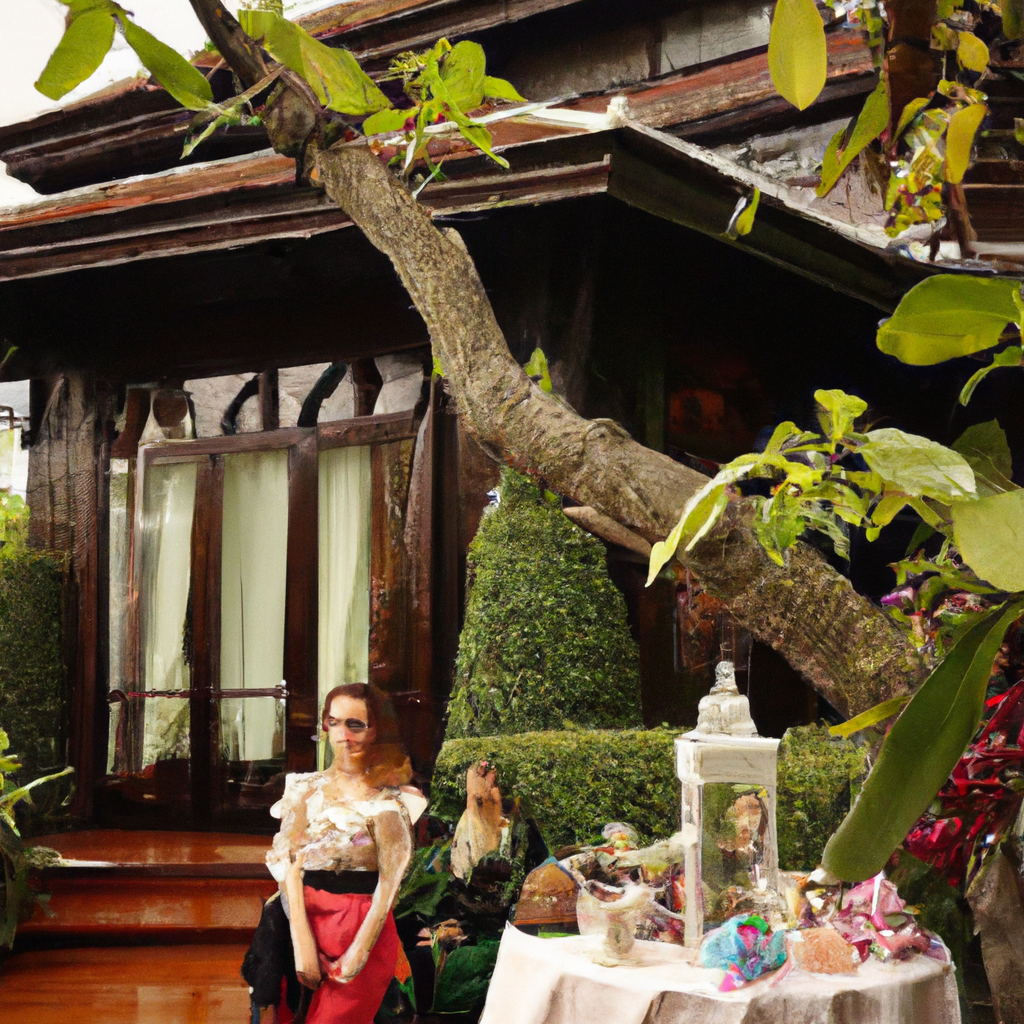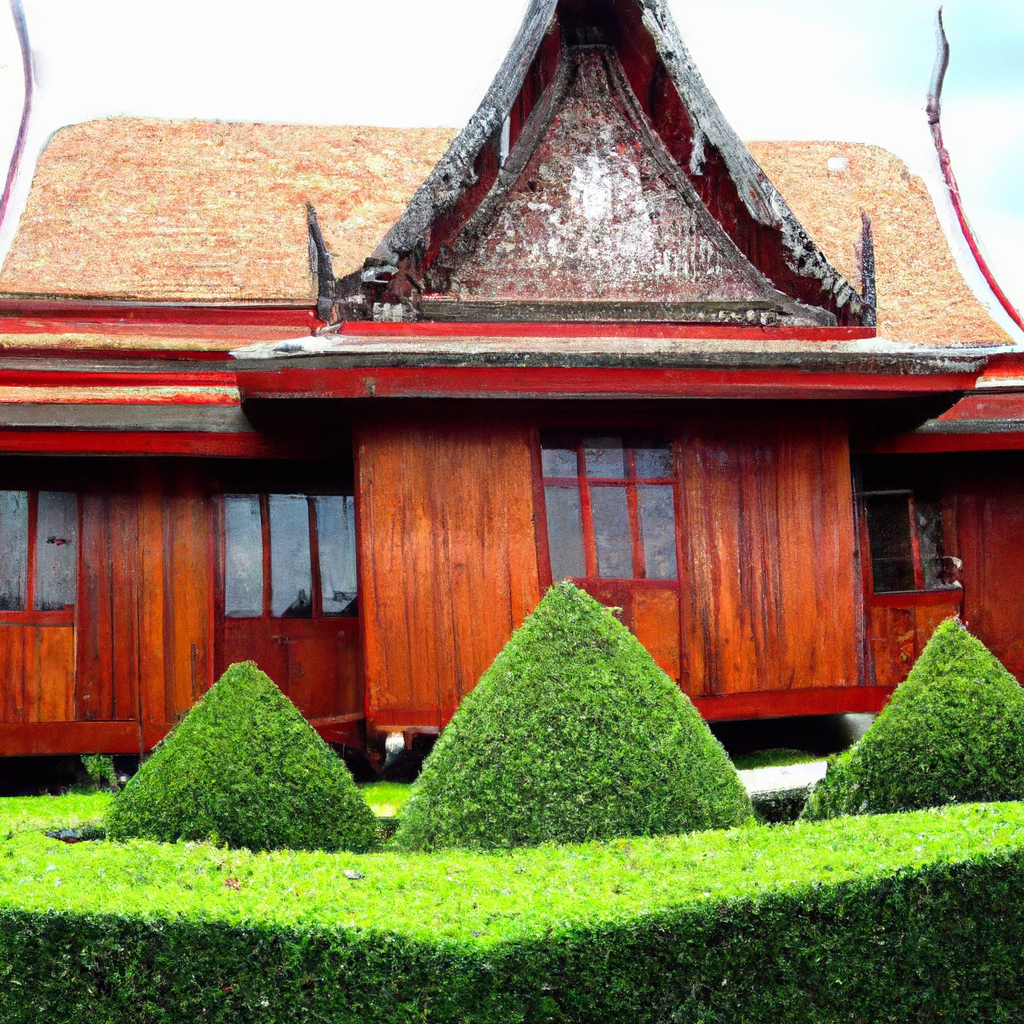Join us on an architectural journey through the captivating city of Bangkok as we uncover its hidden heritage houses. Exploring beyond the usual tourist attractions and cities of Thailand, we invite you to immerse yourself in the rich culture and history of Bangkok’s architectural gems. From the bustling streets and vibrant markets to the serene temples and breathtaking landscapes, this unique tour will take you on a fascinating adventure, showcasing the beauty and charm of Thai craftsmanship. Delve into the enchanting world of hidden heritage houses and discover the secret stories they hold, all while indulging in the tantalizing flavors of Thai food and soaking up the sun on the picturesque beaches of Thailand. Embark on this extraordinary journey and be captivated by the architectural wonders hidden within the bustling heart of Bangkok.

1. Introduction to Bangkok’s Hidden Heritage Houses
1.1 The significance of heritage houses
When you think of Bangkok, you may envision a bustling city with modern skyscrapers and vibrant street markets. However, beneath the surface lies a hidden treasure trove of heritage houses that hold immense historical and architectural value. These houses are more than just structures; they are living testaments to Bangkok’s rich cultural heritage and offer a glimpse into the city’s past.
1.2 The charm of Bangkok’s hidden heritage houses
Bangkok’s hidden heritage houses exude a certain charm that is impossible to replicate. Stepping inside these houses feels like traveling back in time, immersing yourself in the bygone era of Thai history. From intricate carvings to ornate decorations, these houses are a feast for the eyes, showcasing the exquisite craftsmanship and attention to detail that defined traditional Thai architecture.
1.3 Unveiling the architectural journey
Embarking on a journey to explore Bangkok’s hidden heritage houses is not just about witnessing stunning architecture or uncovering historical facts; it is an opportunity to delve deep into the soul of the city. Through these houses, you will gain a profound understanding of Bangkok’s cultural heritage and appreciate the efforts made to preserve its architectural treasures.
2. Exploring the Historical Background
2.1 The rich history of Bangkok
To truly appreciate the significance of Bangkok’s hidden heritage houses, one must understand the city’s captivating history. Bangkok, formerly known as “Krung Thep” or the City of Angels, has a history that dates back over 200 years. It has been a center of trade, culture, and political power, influencing the architectural landscape we see today in its heritage houses.
2.2 Influence of Thai culture on architectural heritage
Thai culture plays an integral role in shaping the architectural heritage of Bangkok. From the intricate carvings depicting mythological figures to the use of vibrant colors and ornate decorations, Thai culture is deeply intertwined with the city’s architectural identity. These cultural influences can be seen in the design and construction of heritage houses, making them unique expressions of Thai heritage.
2.3 Historical events shaping the city’s architectural landscape
Bangkok’s architectural landscape has also been shaped by significant historical events. The city has endured numerous changes, including wars, political upheavals, and urban development. These events have had an impact on the preservation and evolution of heritage houses, making them a living record of the city’s past.
3. Preservation Efforts
3.1 The importance of preserving heritage houses
Preserving Bangkok’s hidden heritage houses is crucial for maintaining the city’s cultural identity and heritage. These houses are not only architectural gems but also provide a tangible link to the past, allowing future generations to connect with their history and understand the evolution of Thai culture and society over time.
3.2 Efforts by the government and organizations
Various government agencies and organizations have recognized the significance of heritage preservation in Bangkok. Initiatives such as the Bangkok Metropolitan Administration’s Historic Conservation Program and the efforts of non-profit organizations like the Siam Society have played a crucial role in promoting the preservation of heritage houses.
3.3 Challenges faced in heritage preservation
Preserving heritage houses is not without its challenges. Urban development pressures, rapid population growth, and the need for modern infrastructure pose significant challenges to the preservation of these houses. Additionally, the maintenance and restoration of heritage houses require specialized skills and funding, making it a complex task for those involved in heritage preservation.
4. Hidden Gems: Famous Heritage Houses
4.1 House of M.R. Kukrit Pramoj
One of Bangkok’s hidden gems is the House of M.R. Kukrit Pramoj, a former Thai Prime Minister. This heritage house showcases a unique blend of traditional Thai and European architecture, reflecting M.R. Kukrit Pramoj’s diverse taste and interests. Visitors can explore the beautiful gardens, admire the antique furniture, and learn about the life and contributions of this prominent figure in Thai history.
4.2 Jim Thompson House
The Jim Thompson House is a must-visit for anyone interested in Thai architecture and culture. The house is a tribute to Jim Thompson, an American businessman who played a significant role in reviving the Thai silk industry. Set amidst lush greenery, the house showcases traditional Thai architecture, with teakwood structures, intricate carvings, and stunning silk textiles. Visitors can take guided tours to learn about Thompson’s life and appreciate the timeless beauty of this architectural gem.
4.3 Suan Pakkad Palace
Suan Pakkad Palace is a hidden oasis in the heart of Bangkok and an architectural masterpiece. This heritage house consists of several traditional Thai houses that were moved to the site from different parts of Thailand. Each house showcases unique architectural elements, such as intricately carved wooden panels, traditional roof designs, and enchanting gardens. The palace also houses an impressive collection of Thai art and artifacts, offering a comprehensive cultural experience.
4.4 The Bangkok Folk Museum
Located within a beautifully preserved traditional Thai house, the Bangkok Folk Museum provides visitors with an immersive journey into the local way of life. As you explore this heritage house, you will encounter exhibits showcasing traditional household items, cultural artifacts, and local crafts. The museum offers a unique opportunity to learn about the daily lives of Bangkok’s residents and gain insight into the city’s cultural heritage.
4.5 Kamthieng House Museum
The Kamthieng House Museum is a hidden gem that transports visitors to rural Thailand. This traditional Thai house, nestled amidst the bustling streets of Bangkok, provides a serene escape from the modern cityscape. The museum offers a glimpse into the traditional agricultural practices, rituals, and customs of rural Thailand. Its tranquil gardens, traditional architectural features, and cultural exhibits make it a captivating destination for those seeking to immerse themselves in Thai heritage.

5. Exploring Architectural Styles
5.1 Traditional Thai architecture
Traditional Thai architecture is characterized by intricate carvings, vibrant colors, and attention to detail. These architectural styles can be seen in various heritage houses across Bangkok, showcasing the mastery of Thai craftsmanship. Traditional Thai houses often feature raised floors, distinctive roof designs, and open-air spaces that harmonize with the tropical climate.
5.2 Chinese-inspired architecture
Chinese merchants and immigrants have had a significant influence on Bangkok’s architectural landscape. The fusion of Chinese and Thai architectural styles can be observed in many heritage houses, reflecting the cultural exchanges between the two communities. Chinese-inspired heritage houses often feature ornate decorations, colorful tiles, and intricate wooden screens that add a touch of elegance and grace.
5.3 Colonial and European influences
The era of European colonization left its mark on Bangkok’s architectural heritage. European-style mansions and villas were built by wealthy aristocrats during this period. These houses are characterized by grandeur, with elaborate facades, expansive rooms, and European design elements. These buildings offer a glimpse into Bangkok’s cosmopolitan past and demonstrate the city’s openness to Western influences.
5.4 Modernist architectural expressions
In addition to traditional and colonial influences, Bangkok’s architectural landscape also includes modernist expressions. From mid-century modern houses to contemporary design, these architectural styles reflect the evolving tastes and preferences of Bangkok’s residents. These modernist heritage houses showcase clean lines, functional spaces, and a seamless integration with the surrounding environment.
6. Architectural Elements and Design Features
6.1 Carvings and ornate decorations
One of the defining features of Bangkok’s hidden heritage houses is the intricate carvings and ornate decorations that adorn their facades and interiors. These carvings often depict mythical creatures, religious motifs, and scenes from Thai folklore. The level of detail and craftsmanship in these carvings is truly awe-inspiring, showcasing the artistic skills of Thai artisans.
6.2 Atriums, courtyards, and gardens
Many heritage houses in Bangkok feature open-air spaces such as atriums, courtyards, and gardens. These spaces serve as a transition between the interior and exterior, providing a sense of tranquility and connection with nature. Atriums and courtyards often feature intricate water features, lush greenery, and traditional Thai plants, creating a serene atmosphere for residents and visitors alike.
6.3 Unique roof designs
The roof designs of Bangkok’s heritage houses are a prominent feature of their architectural identity. Traditional Thai houses typically have gracefully curved roofs with upturned eaves, symbolizing protection and harmony. Chinese-inspired houses often showcase multi-tiered roofs with decorative finials. These unique roof designs not only add visual interest but also serve practical purposes, such as providing shade and ventilation.
6.4 Use of local materials
Heritage houses in Bangkok are often constructed using locally sourced materials such as teakwood, clay tiles, and natural fibers. These materials not only lend authenticity to the architectural style but also contribute to the houses’ sustainable and eco-friendly nature. The use of local materials ensures that each house has a unique character and connection to its surroundings.
6.5 Grand entrances and staircases
As you enter a heritage house in Bangkok, you are often greeted by grand entrances and intricately designed staircases. These architectural features are intended to make a lasting impression on visitors and showcase the importance and status of the house’s owners. The grandeur of the entrances and staircases reflects the social and cultural significance attached to these heritage houses.
7. Engaging with Local Communities
7.1 Supporting local artisans and craftsmen
Exploring Bangkok’s hidden heritage houses provides an opportunity to support local artisans and craftsmen. Many of these houses have workshops and galleries where traditional crafts, such as woodcarving, silk weaving, and pottery, are practiced and displayed. By purchasing handicrafts and supporting local artisans, you contribute to the preservation of these traditional skills and help sustain the local economy.
7.2 Participating in cultural events
Local communities often organize cultural events and festivals that celebrate Bangkok’s heritage and architectural treasures. These events provide a platform for residents and visitors to engage with the city’s rich cultural traditions and gain a deeper understanding of its heritage. By participating in these events, you can immerse yourself in the vibrant traditions and customs of Bangkok’s communities and forge meaningful connections with the local residents.
7.3 Learning traditional construction techniques
Several organizations and educational institutions offer workshops and courses on traditional Thai construction techniques. These programs provide opportunities for individuals to learn the skills and craftsmanship required to build and restore heritage houses. By participating in these programs, you can gain a deeper appreciation for the architectural heritage of Bangkok and contribute to its preservation by passing on these traditional techniques to future generations.
8. Combining Heritage with Modernity
8.1 Adaptive reuse of heritage houses
Preserving heritage houses does not always mean freezing them in time. The adaptive reuse of heritage houses has gained popularity as a way to breathe new life into these architectural treasures. Some heritage houses have been transformed into boutique hotels, restaurants, galleries, or even cultural centers. By combining heritage with modernity, these spaces offer a unique experience that respects the past while embracing the present.
8.2 Transforming heritage spaces into modern venues
Bangkok’s hidden heritage houses have been transformed into modern venues that cater to contemporary needs. From hosting art exhibitions and fashion shows to serving as event spaces for weddings and corporate functions, these heritage houses have become sought-after destinations for both locals and tourists. These transformations allow for the continued use and preservation of heritage houses in a way that resonates with modern audiences.
8.3 Balancing preservation and development
Preserving Bangkok’s hidden heritage houses requires striking a delicate balance between preservation and development. Urban growth and the need for modern infrastructure must be integrated with the conservation of heritage houses. Collaborative efforts between government agencies, organizations, and local communities are essential to ensure that these architectural treasures are protected for future generations while allowing for responsible and sustainable development.
9. Architectural Tours and Experiences
9.1 Guided tours of heritage houses
Guided tours offer a fascinating way to explore Bangkok’s hidden heritage houses. Knowledgeable guides provide insights into the historical and architectural significance of each house, sharing stories and anecdotes that bring the past to life. These tours allow you to appreciate the intricate details and craftsmanship of the houses while learning about the cultural and social contexts in which they were created.
9.2 Immersive cultural experiences
Immersive cultural experiences are another way to engage with Bangkok’s hidden heritage houses. These experiences go beyond the surface-level appreciation of architecture and delve into the rich cultural traditions associated with each house. For example, you may have the opportunity to participate in traditional Thai ceremonies, attend performances of traditional music and dance, or learn traditional crafts from local artisans.
9.3 Alternative approaches to exploring architectural heritage
In addition to guided tours and cultural experiences, there are alternative approaches to exploring Bangkok’s architectural heritage. Self-guided walks and smartphone apps can provide a more independent and personalized exploration. These resources offer historical information, maps, and audio guides that allow you to explore at your own pace and choose the sites that interest you the most.
10. Conclusion
10.1 Appreciating Bangkok’s hidden heritage houses
By delving into the world of Bangkok’s hidden heritage houses, you embark on an architectural journey that allows you to appreciate the city’s rich cultural history. These houses are not just architectural marvels; they are windows into the soul of Bangkok and a testament to the craftsmanship, traditions, and stories that have shaped the city.
10.2 Preserving architectural treasures for future generations
Preserving Bangkok’s hidden heritage houses is essential for safeguarding the city’s architectural treasures. Through collective efforts, it is possible to ensure that future generations can continue to experience the charm and cultural significance of these houses. By supporting preservation initiatives and engaging with local communities, we can contribute to the sustainable preservation of Bangkok’s architectural heritage.
10.3 An invitation to embark on your own architectural journey
As you conclude this article, we invite you to embark on your own architectural journey through Bangkok’s hidden heritage houses. Whether you choose to join a guided tour, immerse yourself in cultural experiences, or explore independently, you will undoubtedly be captivated by the beauty, history, and charm that these architectural gems have to offer. So, pack your curiosity and embrace the opportunity to uncover the hidden stories of Bangkok’s heritage houses.
